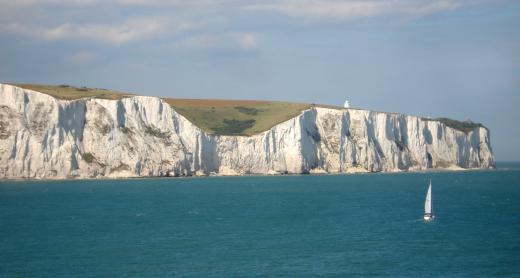What is Formation Geology?
 Dee Saale
Dee Saale
In general, formation geology is the study of more than one rock unit that is traced over a large area. A formation must be distinctive and thick enough so that it can be plotted on a specific location on a map, as well. There are many geologic layers that comprise the surface of the Earth, called stratigraphic units, each which has a complex classification system. Each layer is divided into erathems or the rocks that were formed during a particular era of time. Erathems are then classified into systems or rocks that were formed during a certain period of time. Systems are then divided into groups or rocks of more than one formation that have certain features in common. Typically, formations are named after the place where they were found.
There are countless examples of formation geology across the globe. For example, the Austin Formation is located in McLennan County, Texas. To the naked eye, there appears to be limestone cliffs, but to well-studied geologists there is data that indicates there were volcanoes in the area that gave rise to a specific type of soil and rock. In South Africa, people travel from around the world to see the Enon Formation, one of the vastest formations in the country and still considered to be an active system along its fault lines. In Japan, the exact age of the basal portion of the Fukuji Formation is still to be determined; however, by studying fossils they have figured out the age of the upper and lower sections of the formation.

Through formation geology, a geologist can date the rock layers in an area. She can also look for other areas where there are similar formations. For example, there may be two rock outcroppings and each may have similar geological formations. The geologist may then try to compare the two and see if there were other formations that existed between the two that were worn away. Formation geology will also allow a geologist to study past and present geologic activity, such as volcanic activity or activity relating to tectonic plates.

Formation geology can be exciting and rewarding, especially if a new formation is discovered. Time and close attention to details can allow geologists to link formations and land masses across the globe. With each period in time, vast changes occurred on Earth – each leading to distinct formations. History and science are combined for those interested in formation geology.
AS FEATURED ON:
AS FEATURED ON:












Discuss this Article
Post your comments